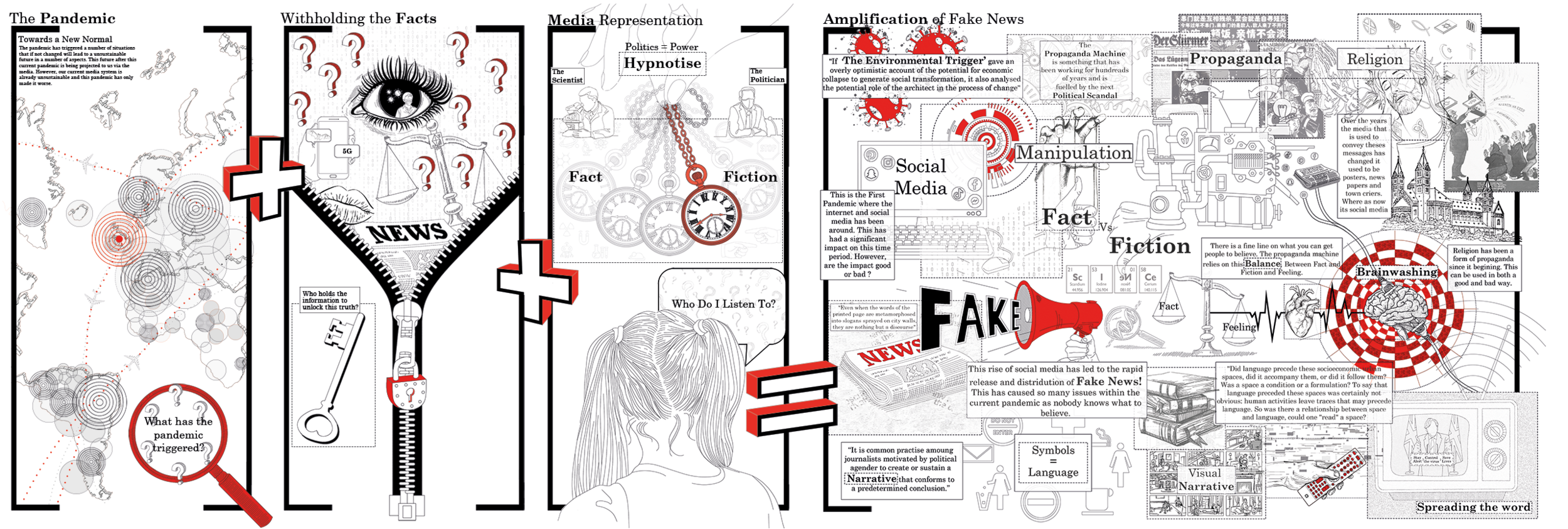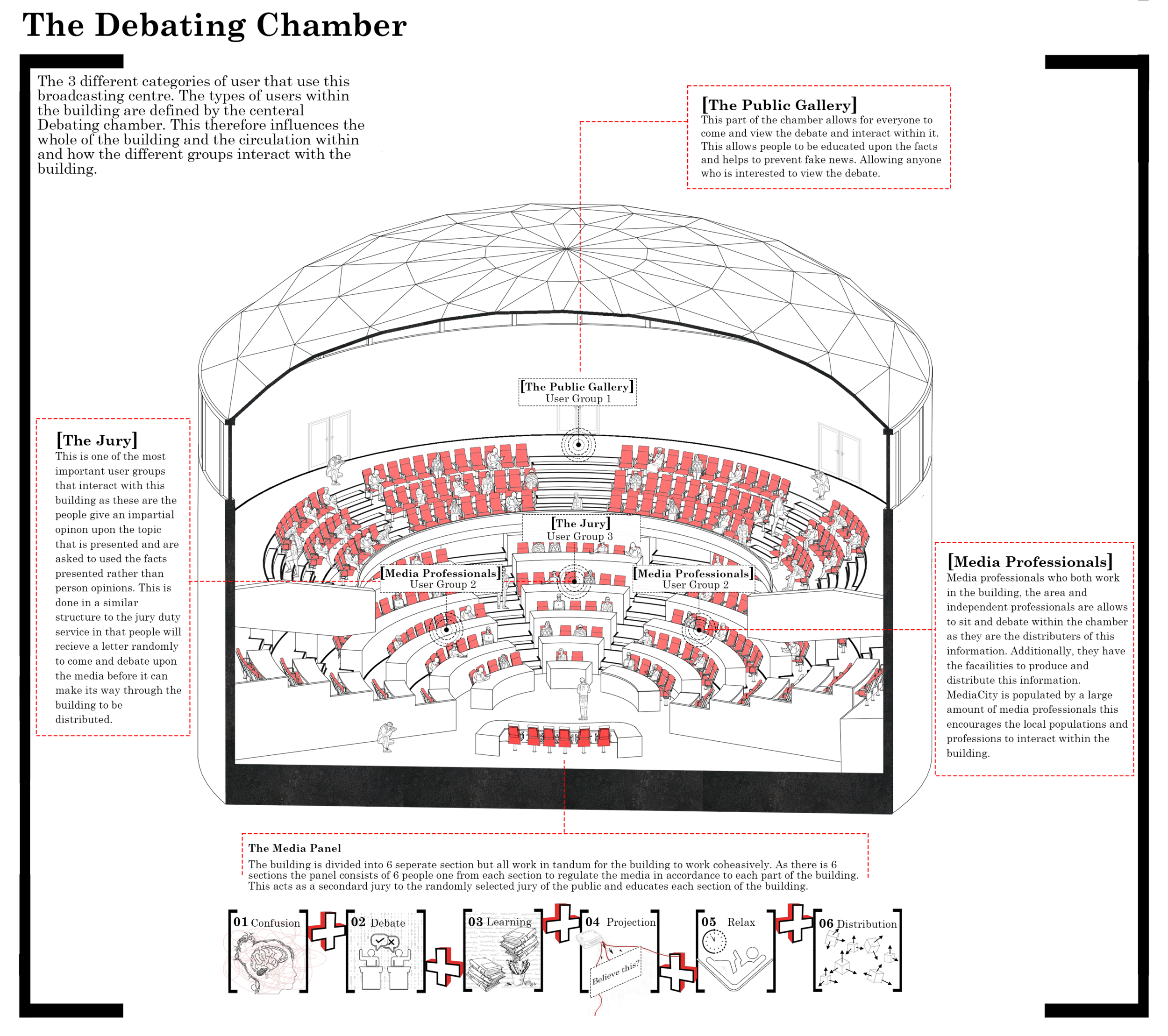
‘Behind The Screen’ by Samantha Neal
Bachelor of Architecture (ARB/RIBA Part I) (2018-2021)
University of Lincoln, United Kingdom
Key supervisors: Liam Swaby
The Covid-19 Pandemic has been an unpredictable roller-coaster that the world has encountered during the last 18 months. This duration has been filled with uncertainty in all aspects, from the beginning of not knowing what to do or believe, to the present of not knowing when or if things will go back to our classification of ‘normal.’ However, this is not the only virus that has been spreading. There has been a secondary one which is the socio-political virus of fake news that seeks to cause an abundance of misinformation, confusion, and a disconnection from the physical world. This has been a side effect of the rapid spatial shift that Covid-19 has caused.
This spatial change has caused an exponential amplification of fake news that has been created by a reliance on the digital realm while physical interactions were removed from day-to-day life. This has left people seated behind their screens relying on the media to tell the facts and subsequent fake news without any interaction from the viewers. This dependence on digital media and its distribution coupled with the unknown of the unfolding pandemic has caused fake news to amplify, thus inspiring this project. The concept of fake news, twisted truth and propaganda are not new, but these occurrences have been escalated by the flicking of the digital switch that has taken over analogue media. However, the pandemic has amplified and shined a light on this due to spatial shift. This rampant growth in augmented information allows us to speculate on a potential future if this condition becomes more contagious and leads to a destiny that is ruled by the digital dimension. This has been explored in dystopian literature and is heavily talked about in George Orwell’s 1984 where independent thought is illegal, and the party dictates everything.
‘Behind The Screen’ focuses on how information has been recited during this pandemic and has led to the questioning of information that the media has projected. Currently, the broadcasting of media is a private sector with minimal public interaction. Additionally, the source of the information is predominantly anonymous. This has posed an issue during the pandemic, allowing for more fakeries to spread as the information has been depicted by politicians, who are notoriously unreliable in the public’s eye, prompting the public to question the authenticity of the information.
This project aims to peer behind the screen and reveal the machine that manipulates the media, and to re-establish this system to create a building that allows media to be debated upon and the facts to be observed in a different format to what is traditionally known, therefore, allowing the production and distribution of news to emerge from a reliable source.
The project aspires to change the journey that is experienced and define the users that would be involved. The speculative scheme would have 6 sections: confusion, debate, learning, projection, relaxation and distribution. Each will uniquely engage the user to provide a ‘chaos to clarity’ concept so they leave the building with an understanding of how information is broadcasting, alongside the opportunity to learn and debate within the media. The scheme would have 3 different user groups prescribed by the debating chamber. These user groups consist of:
The public - users who can view the media within the chamber from the first floor
Media professionals - experts who bring the facts and information to form the debate
The jury - a user group selected at random to interact with the debate and put across their opinion
This allows everyone to be included within the scheme and brings it into the public realm.
The proposed location of this speculative project would be MediaCityUK, located in Manchester, and classed as the digital hub for the north. This location has a high media output and has become a tourist spot, but the two domains do not collide, and this project would allow for this interaction to happen.
Samantha Neal / MA IED / The RCA, London, 2019-21
I'm a 21-year-old architecture student at the University of Lincoln expecting to graduate in 2021. A central interest within my work is the fluctuating relationship between place, programme, event, and how these can be applied to enhance society. Architecture allows my curious nature to problem solve using a creative method.
Fake News, Truth, Covid-19, Broadcasting, Media, Debate, Fact, Projection, Information, Amplification






